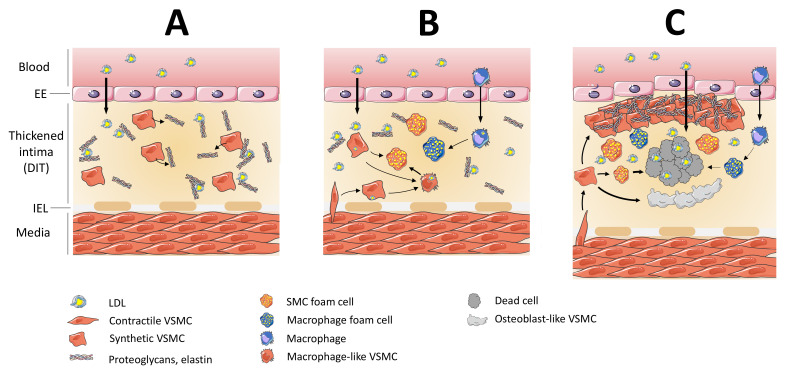Figure 3.
Role of VSMCs in atherosclerosis. (A) Pre-atherosclerosis: An excess of circulating LDL particles favors their passage into the sub-endothelial space where they undergo oxidation mediated by surrounding cells and enhanced by the presence of extracellular matrix compounds. This diffuse intimal thickening contains synthetic VSMCs and their secretory products elastin and proteoglycans. VSMCs may also express scavenger receptors, allowing them to ingest oxidized LDLs in a non-regulated fashion and leading to the formation and accumulation of foam cells. (B) Macrophage infiltration, VSMC migration and foam cell formation: Monocytes enter the arterial wall and differentiate into macrophages, whereas medial VSMC migrate the intima, where they accumulate LDL particles and become foam cells. (C) Fibrous cap and necrotic core formation and calcification: Synthetic VSMCs are responsible for the formation of the fibrous cap, which prevents plaque rupture. However, apoptotic VSMCs also participate in the formation of a necrotic core. Finally, VSMCs may adopt an osteoblast-like cell phenotype, resulting in plaque calcification. EE: Endothelial cells; DIT: Diffuse Intimal Thickening; IEL: Internal elastic lamina.

